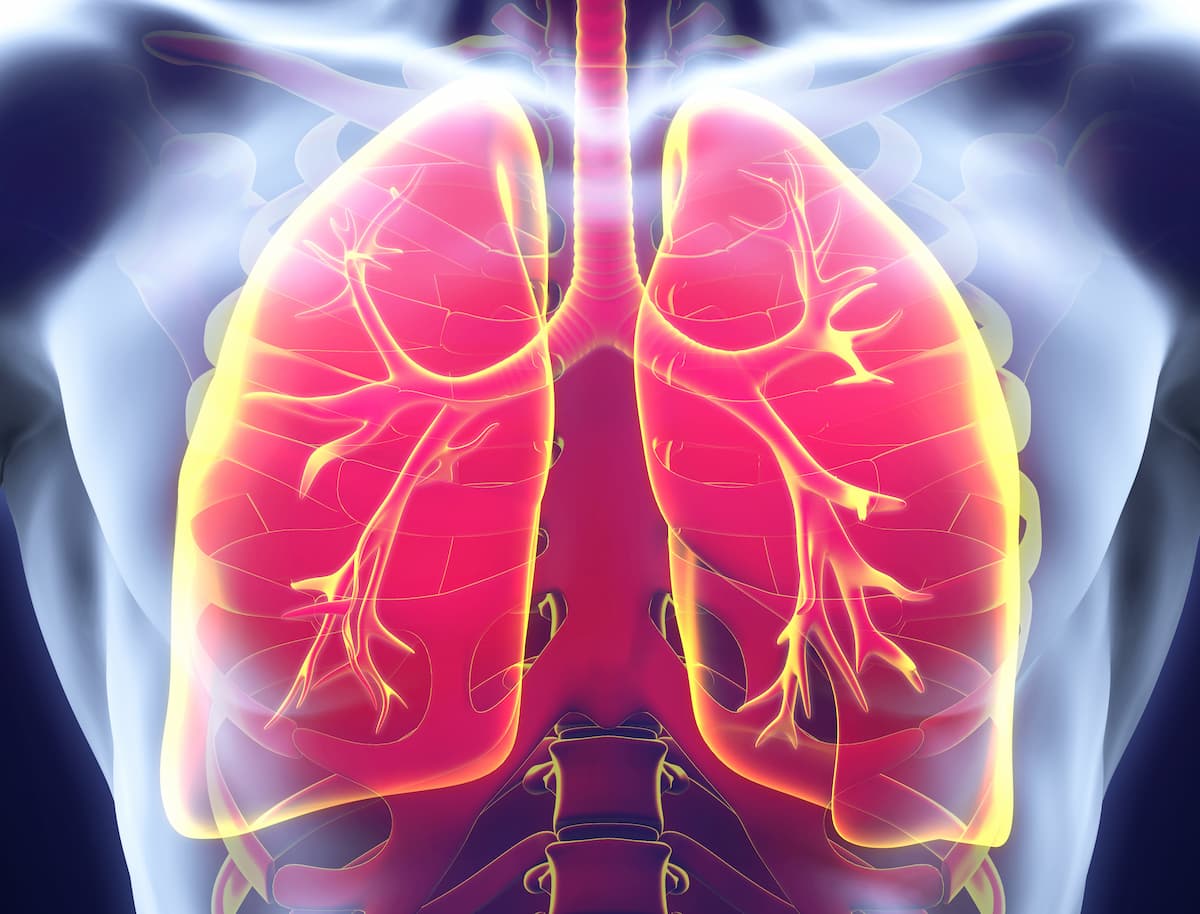Datopotamab Deruxtecan Combo Shows Responses in Advanced NSCLC
Datopotamab deruxtecan plus pembrolizumab produces no new safety signals in the treatment of patients with advanced non–small cell lung cancer in the phase 1b TROPION-Lung02 trial.
“Since the data is mature, at this moment, the response is the most reliable index for anti-tumor activity,” explained Yasushi Goto, MD, in his presentation of these data at ASCO.

Combining datopotamab deruxtecan (Dato-DXd), an investigational antibody-drug conjugate (ADC), with pembrolizumab (Keytruda) and chemotherapy demonstrated promising responses in patients with advanced or metastatic non–small cell lung cancer (NSCLC), according to findings from the phase 1b TROPION-Lung02 (NCT04526691) study presented at the 2023 American Society of Clinical Oncology (ASCO) Annual Meeting.
Data from the phase 1b, global, dose-escalation and -expansion study met its primary end point of safety and tolerability with no new safety signals from the ADC therapy and manageable treatment-emergent adverse events (TEAEs). Further, the study hit its secondary objectives of efficacy with an encouraging overall response rate (ORR), and pending complete (CR) and pending partial responses (PRs) are trending favorably for the combination.
“Since the data is mature, at this moment, the response is the most reliable index for anti-tumor activity,” explained Yasushi Goto, MD, in his presentation of these data at ASCO. “There are still 2 pending PRs and if we add this to the confirmed PR, the response rate to the doublet was 38% [95% CI, 26%-51%], and the triplet was 49% [95% CI, 37%-61%].”
Efficacy of Anti-Tumor Activity
Overall, 120 patients were treated by the time of data cutoff on October 31, 2022, with patients put into 6 cohorts of treatment as the dose was escalated. Twenty patients were given 4 mg/kg of Dato-DXd intravenously once every 3 weeks plus 200 mg of pembrolizumab (Cohort 1) and then 44 patients were given 6 mg/kg of Dato-DXd and 200 mg of pembrolizumab at the same intervals (Cohort 2), which made up the doublet therapy arm.
In cohort 3 (n = 20) and cohort 4 (n = 30), patients were given 4 mg/kg of Dato-DXd then 6 mg/Kg of the ADC along with carboplatin AUC 5, whereas, in cohorts 5 (n = 12) and 6 (n = 10) they were given 75 mg/m2 of cisplatin as the Dato-Dxd dose expanded. These remaining cohorts made up the triplet arm of the study.
As mentioned, the triplet arm showed a higher ORR among all patients, and this continued for patients in the first-line setting. In the doublet arm (n = 34), the ORR was 50% (95% CI, 32%-68%) compared with 57% (95% CI, 42%-70%) in the triplet arm (n = 53). The disease control rate (DCR) was also higher in the triplet arm vs the doublet arm in all patients; however, this was similar in the first-line setting at 87% vs 84% and 91% vs 91%, respectively. However, stable disease rates favored patients in the doublet arm in both settings at 49% vs 38% and 47% vs 34%, respectively.
Preliminary progression-free survival (PFS) in all patients appeared to favor the doublet arm at a median of 8.3 months (95% CI, 6.8-11.8) compared with 7.8 months (95% CI, 5.6-11.1) in the triplet arm. According to Goto, an oncologist and researcher at the National Cancer Center Hospital in Tokyo, Japan, while a median duration of response (DOR) was not reached, the depth and observed DOR was encouraging in both sets of patients. This also extended to the subgroups of patients with PD-L1 NSCLC (n = 87), especially patients with a PD-L1 status of less than 1%, that continued to have stable and ongoing responses at the time of data cutoff.
Safety and Tolerability Remains Steady
As mentioned, no new safety signals were observed on this study as they had been determined with combination therapy in prior studies of Dato-DXd. The most common TEAEs of any grade occurring in 20% or more of patients were nausea (45%) and stomatitis (45%). The most common grade 3 or greater TEAEs occurred in 61% of patients with the most frequent being neutrophil count decreased (8%) and amylase increased (8%). Further, the researchers observed that hematologic TEAEs of grade 3 or greater occurred more frequently in patients in the triplet therapy than with the doublet therapy.
Discontinuation rates due to AEs remained moderate in both groups at 23% in the doublet and 28% in the triplet, and no deaths due to treatment were observed. However, deaths associated with TEAEs included 3 patients in the doublet arm and 7 in the triplet arm. Moreover, 22% of patients in the doublet had a dose reduction of Dato-DXd compared with 15% in the triplet arm.
AEs of special interest in the doublet and triplet arms observed on the study were mainly grade 1 or 2, including oral mucositis/stomatitis (58% vs 43%, respectively), ILD/pneumonitis events (17% vs 22%), and ocular surface toxicity (16% vs 24%). Furthermore, there were no grade 5 AEs of special interest and there were no grade 4 or 5 events of ILD/pneumonitis, therefore, the therapy remained tolerable for the researchers.
With these encouraging results, Goto explained that 2 studies are under way to evaluate survival with Dato-DXd combinations comparing this combination along with the addition of pemetrexed (TROPION-Lung07; NCT05555732) and comparing it to pembrolizumab monotherapy (TROPION-Lung08; NCT05215340).
Reference
Goto Y, Su W, Levy B, et al. TROPION-Lung02: Datopotamab deruxtecan (Dato-DXd) plus pembrolizumab (pembro) with or without platinum chemotherapy (Pt-CT) in advanced non-small cell lung cancer (aNSCLC). J Clin Oncol. 2023;41(suppl 16). doi: 10.1200/JCO.2023.41.16_suppl.9004
Newsletter
Stay up to date on recent advances in the multidisciplinary approach to cancer.